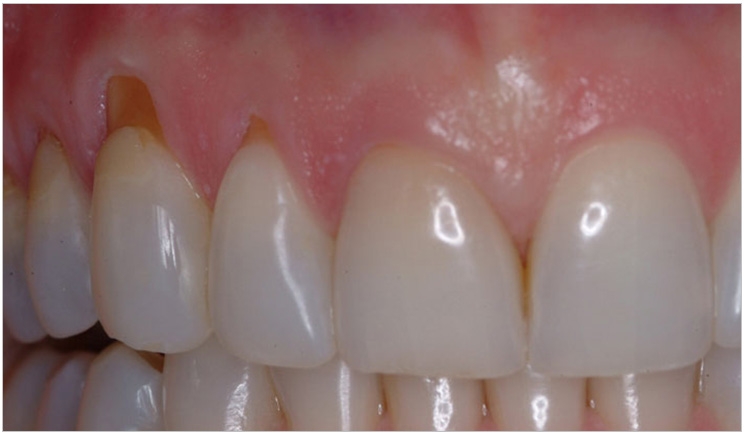
As physicians continue to wrestle with rising rates of both obesity and gum disease, many researchers are exploring the connections between these issues. For example, Interleukin Genetics recently examined how the Interleukin-1 (IL-1) family of cytokines could amplify the negative impact of obesity on the development of periodontitis.
The company studied 292 participants from the Department of Veterans Affairs Longitudinal Study and found significant interactions between IL-1 genetic variations and obesity-related traits in predicting the progression of periodontal disease. Subjects who were obese and tested positive for IL-1 were 70% more likely to experience periodontal disease progression than those without those risk factors.
Ken Kornman, chief scientific officer of Interleukin Genetics, shared his insights about the company’s research.
Q: Is obesity by itself a risk factor for periodontal disease?
A: Obesity, specifically the weight around the abdomen, increases systemic inflammation levels and is by itself a risk factor in multiple chronic inflammatory diseases such as type 2 diabetes and cardiovascular diseases. There is growing evidence to support that obesity also plays a role in periodontitis. This study has shown that obesity in individuals with genetic variations that amplify inflammation IL-1 are more likely to have progressive periodontitis than obese individuals who do not have those genetic variations. Additionally, the effect of obesity in worsening the clinical severity of periodontitis was most evident when the genetic risk factor was also present.
Q: What is the connection between obesity and periodontal disease? How does one lead to the other?
A: As obesity increases the total burden of systemic inflammation, it directly influences chronic inflammatory diseases like periodontitis, leading to bone and soft-tissue destruction. To date, there is no direct evidence suggesting that periodontitis increases the risk for obesity, but one may speculate that severe periodontitis might influence obesity through aggravating control of blood glucose in type 2 diabetes patients.
Q: How does IL-1 amplify the negative impact of obesity on oral health?
A: The underlying pathogenesis connecting obesity to periodontitis progression is not yet fully established. IL-1 is one of the key initiators and regulators of the inflammatory response. It is well accepted that fat around the abdomen increases local and systemic inflammation. The bacterial plaque on teeth stimulates the production of IL-1 and other cytokines to start the gingival inflammation that leads to periodontitis. IL-1 is one of the strongest activators of bone and connective tissue destruction that support teeth. Several IL-1 blocking drugs are currently on the market or in clinical trials to treat major chronic diseases including second heart attacks, diabetes, and rheumatoid arthritis.
Q: Does everyone have IL-1? Or are there variations that leave some people more susceptible to periodontal disease than others?
A: Everyone produces IL-1, but some individuals consistently produce more than others. In fact, the gene responsible for the production of IL-1 is different in about one third of the population. Individuals who are genetically predisposed to be high producers of IL-1 have a higher risk for multiple-organ and organ system failure. This hyper-response is associated with increased risk and severity for type 2 diabetes, stroke, coronary artery disease, pregnancy complications, rheumatoid arthritis, and periodontitis.
Q: Is there anything dentists can do to address IL-1’s impact on periodontal disease to determine the level of risk or to mitigate it using potential treatments?
A: First and foremost, dentists should be aware of the risk factors associated with periodontitis. A prior history of periodontitis is a major risk factor for future disease progression, but the presence of smoking, type 2 diabetes, and a genetic predisposition to overproduce inflammation are also important factors. PerioPredict, a genetic risk test from Interleukin Genetics, can identify patients at risk for overproducing IL-1 and therefore developing severe or progressive periodontitis. Once the risk factors have been identified, dentists and hygienists should inform their patients of their personal risk factors for developing severe periodontal disease as well as educate them on the importance of controlling inflammation, reducing or stopping smoking, and keeping their diabetes under control.
Q: How should dentists approach obesity as a risk factor for periodontal disease with their patients?
A: This study supports the value of identifying all risk factors such as obesity, smoking, and type 2 diabetes that have the potential to increase periodontal disease progression. It is also important to educate patients that they can control risk factors that impact their health starting with good home care and regular professional monitoring and cleanings. The more risk factors patients have, the more they will benefit from more intensive dental care including more frequent cleanings. Dentists should approach obesity as another risk factor for periodontal disease progression. It is also important to obtain the PerioPredict risk assessment to further stratify dental patients at risk for periodontal disease progression.
The study, “Influence of Obesity on Periodontitis Progression is Conditional on IL-1 Inflammatory Genetic Variation,” was published by the Journal of Periodontology.
Related Articles
Treat Obesity to Improve Oral Health
Link Between Low Testosterone and Periodontitis Bears Research
Pot Smokers Have More Gum Disease











